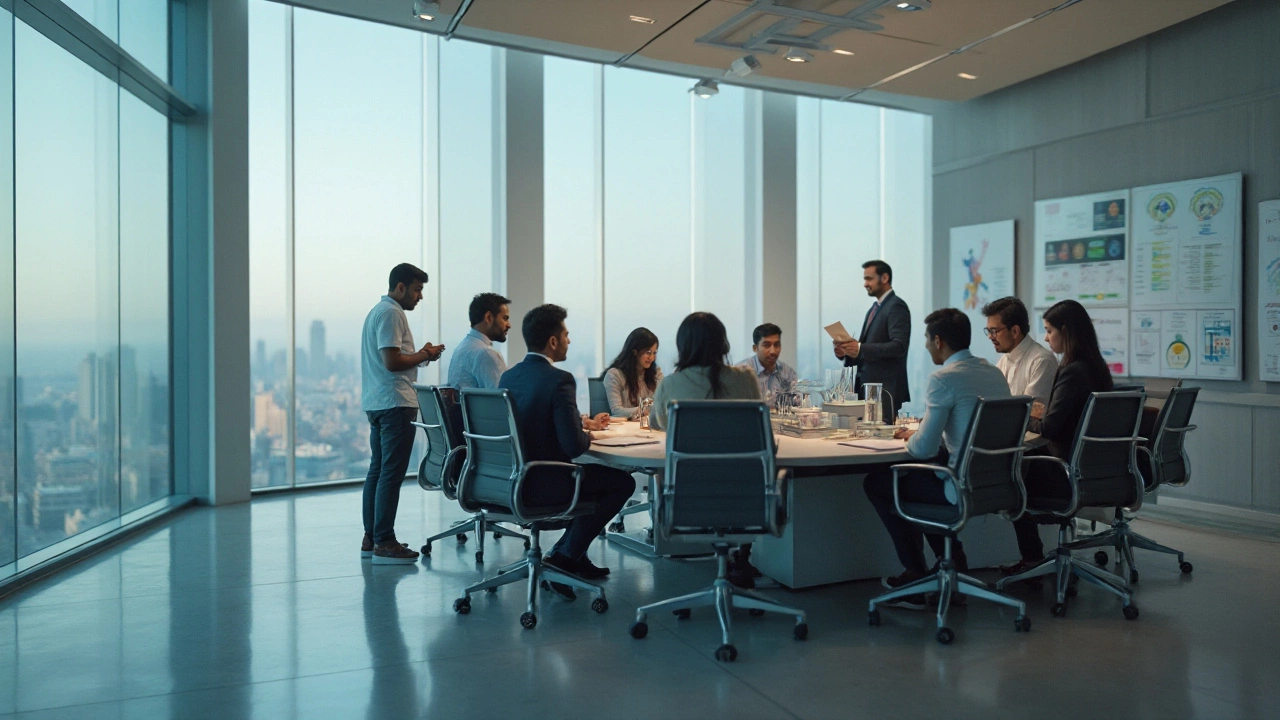December 2024 Archive – Manufacturing News & Insights
Welcome to the December roundup! This month we tackled everything from why Indian cars cost so much to the newest steel breakthroughs, plus practical tips for launching a small‑scale plant. If you’re curious about what’s shaping India’s manufacturing scene and beyond, you’re in the right place.
Automotive & Steel Highlights
First up, we unpacked the high price tags on Indian cars. Import duties, raw‑material costs, and tighter emissions rules are the main culprits. We also showed how brands like Tata and Mahindra are breaking into the U.S. market, adapting design and pricing to win over American buyers.
Moving to steel, our deep dive explored how new alloy mixes and AI‑driven furnaces are reshaping the industry. These innovations promise lighter, stronger products while cutting energy use—a win for manufacturers and the planet.
We didn’t stop at big players. A quick look at Bangladesh revealed a budding car‑making ecosystem, driven by new factories and government incentives. While still early days, the country could become a regional supplier if the momentum holds.
Textiles, Electronics & Business Guides
Textile fans got plenty of love. We highlighted Surat’s status as India’s largest textile hub, often called the ‘Silk City’, and revisited Ahmedabad’s legacy as the ‘Manchester of India’. Both cities combine traditional craftsmanship with modern tech, keeping them competitive worldwide.
Neps—tiny fiber knots—were dissected in a practical guide for yarn makers. Knowing why neps form and how to control them can lift fabric quality and reduce waste.
On the electronics front, we listed India’s top‑selling gadgets, noting how local production of smartphones and wearables is driving down prices and boosting adoption.
For entrepreneurs, we compiled a checklist for profitable manufacturing sectors, spotlighted affordable U.S. hubs, and walked through the steps to start a small‑scale operation. Real‑world examples, like the rise of fast‑growing manufacturing states in the U.S., illustrate where opportunities lie today.
Finally, we featured the leading figures in India’s pharma industry and explained the complex manufacturing processes that qualify for government support. Understanding these schemes can help businesses navigate funding and regulatory hurdles.
That’s a wrap on December’s highlights. Whether you’re an industry veteran or just getting started, the insights here give you a clear picture of current trends and practical next steps. Keep checking back for more deep dives and actionable advice from Blue D Air Control.

Unraveling the High Costs of Indian Cars: Reasons and Insights
The price tag on an Indian car often leaves consumers wondering why these vehicles are priced steeply. Several factors contribute to this phenomenon, including the impact of import duties, the cost of raw materials, and the integration of advanced technology. Moreover, the growing demand for specific models and the effect of new emissions and safety regulations play a significant role. This article delves into the reasons behind the high costs of cars manufactured in India and provides some insights into the dynamics of the automobile market.

Indian Car Brands Making Waves in the USA Market
Indian car manufacturers have begun to establish a foothold in the United States, bringing a unique blend of style, value, and innovation. Brands such as Tata Motors and Mahindra & Mahindra are leading this charge with vehicles designed to meet diverse needs. These automakers are committed to expanding their reach by tailoring their models to American preferences while maintaining their distinct Indian character. The rise of Indian cars in the US is also fueled by a growing interest in more economical and sustainable transportation options.

The Emerging Future of Steel: Innovations and Developments
As the world continues to industrialize and innovate, the demand for steel is undergoing significant changes. This article explores the evolving role of steel in the future, particularly how advancements in manufacturing processes are shaping its potential. Discover the revolutionary materials and technologies that promise to redefine steel's place in the industrial world. By looking at current trends and future predictions, we gain insight into how these transformations will impact both industrialists and everyday consumers.

Fastest Growing Manufacturing States: Opportunities & Trends
Manufacturing in the U.S. has been undergoing significant shifts, with some states emerging as frontrunners in industrial growth. This article explores which states are leading the charge, the factors driving this growth, and the unique opportunities they offer to entrepreneurs and industry newcomers. Discover the motivations for these changes and learn some practical tips for starting a manufacturing business in these thriving regions. Whether you're a seasoned professional or a startup enthusiast, understanding these trends can help you make informed decisions for your future ventures.

Exploring Car Manufacturing Endeavors in Bangladesh
Understanding the potential of Bangladesh's car manufacturing capability can uncover new opportunities in the South Asian auto industry. While Bangladesh is not traditionally known for car manufacturing, it has taken significant steps towards becoming a contender. This article explores the possible emergence of car production in Bangladesh, its abilities, and the impact on the local and regional markets. Bangladesh’s developing infrastructure and investments in the automotive sector are transforming perceptions and expectations of the country's industrial potential.

Discovering the Largest Textile Hub in India
India is home to some of the largest textile markets in the world, each with its own unique character and significant contribution to the industry. Among these, one stands out due to its scale and influence: Surat. Known as the 'Silk City', Surat is renowned for its vibrant textile trade and manufacturing prowess. Aspiring entrepreneurs and established industry players alike flock to this bustling hub, drawn by its reputation for quality, variety, and innovation in textiles.

Top Money-Making Manufacturing Industries
Understanding which manufacturing industries generate the most revenue is pivotal for entrepreneurs and investors. This article delves into top-performing sectors, providing insights into why some industries are more profitable than others. It highlights key areas for potential growth and success in the manufacturing sector. Explore emerging trends and tips for maximizing profit in this dynamic field.

Discovering Affordable Manufacturing Hubs in the USA
Exploring the most cost-effective places for manufacturing within the United States can greatly benefit startups and businesses aiming to reduce expenses. This article highlights regions known for their affordability in terms of setup costs, labor, and resources. While providing insights into the economic factors influencing these locations, it also considers the advantages of local incentives and infrastructure. The goal is to help entrepreneurs make informed decisions about where to establish their manufacturing facilities in order to maximize efficiency and sustainability.

Understanding Neps in Textile Manufacturing in India
The term 'nep' in the textile industry refers to tiny clusters of entangled fibers that form a small knot or lump. Neps can significantly affect the quality and texture of yarns and fabrics. Factors like fiber origin, handling, and processing techniques can lead to the formation of neps. Understanding and managing neps is crucial for textile manufacturers aiming for high-quality output. This article delves into what neps are, why they form, and how to control them in textile production.

Exploring Ahmedabad: The Heartbeat of India's Textile Industry
Ahmedabad, often dubbed the 'Manchester of India,' is renowned for its thriving textile industry. The city's historical significance dates back to the British colonial period, where it became a hub for textile production due to its strategic location and abundant resources. Today, Ahmedabad boasts a rich tapestry of both traditional and modern manufacturing practices, making it a key player in the global textile market. This article delves into the past, present, and future of Ahmedabad's textile scene, highlighting significant contributors and innovations.

Top-Selling Electronics in India: A Deep Dive into Consumer Trends
India's electronics market is booming, with several key products driving demand. Smartphones, TVs, and wearables are leading the way, influenced by advancements and local production. This article explores the most sought-after electronic products in India, examining trends and factors contributing to their popularity. From advanced smartphones to eco-friendly appliances, the choices reflect India's diverse consumer preferences.

The Leading Figures in India's Pharmaceutical Industry
The Indian pharmaceutical industry has flourished over the years, making significant contributions to global healthcare. Several key figures and companies have emerged as leaders in this sector. This article delves into the top players and the factors contributing to their success. It highlights influential personalities in the industry who are shaping its future.











